While writing last week’s post about understanding ingredients I quickly came to the realization that this topic is way too big to cover in a single post. I decided I’d break this part of my free basic cooking course into two parts. What I’ve now realized is that this topic is too big for even two posts, and maybe even three. So, today we are going to look at part 2 of understanding ingredients but, this will not be the final part. Because I don’t want to drag this out too long, I am going to dedicate Friday’s post to this and possibly next Wednesday’s as well. I will know that for sure on Friday.
Today we are going to look at potatoes and onions. So, let’s get to it.
BASIC COOKING COURSE WEEK 4: UNDERSTANDING INGREDIENTS PT. 2 Potatoes and Onions
Potatoes

I have written multiple posts about potatoes and all the ways I love them to be prepared. In fact, I wrote one of these posts just last week. When I talk about potatoes people are often surprised about the fact that I mention that there is a right potato for each job. Just like there is a right potato, there are many wrong potatoes for a job too.
There are three main categories of potatoes. They are waxy varieties, mealy (a.k.a. starchy, floury) varieties and all-purpose varieties that fall somewhere between waxy and mealy. Let’s take a look at all three categories and what the best use for each is.
Before I get into this I should point out that there are over 4000 varieties of potatoes. I’m not going to name them all. I’m going to focus on the potatoes that you are likely to see in the grocery store every day.
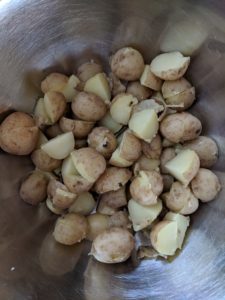
Waxy Potatoes
Waxy potatoes are varieties that have high moisture content and low starch content. They generally have smooth skin and shiny flesh. Waxy potato varieties include fingerlings, new potatoes, red bliss as well as a host of others you’ve probably never heard of and are unlikely to encounter.
Waxy potatoes tend to have a more potato-centric flavour than mealy potatoes. However, their true benefit comes from the fact that they hold their shape when cooked. This makes them the perfect potato for soups, chowders, potato salads, or layered potato dishes like scalloped potatoes or potato gratin. They are also great roasted having a bit more bite than a mealy potato.
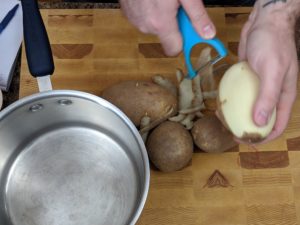
Mealy Potatoes
Mealy or starchy potatoes, as opposed to waxy varieties, are lighter and more fluffy due to their high starch content and low moisture. This makes them great for mashed potatoes, french fries, and baked potatoes. Mealy varieties include russets, purple potatoes, some red-skinned potatoes, and Idaho potatoes if you’re in the states.
Mealy potatoes tend to have a more neutral flavour that takes well to the addition of other flavours like cream and butter in mashed potatoes or ketchup on fries.
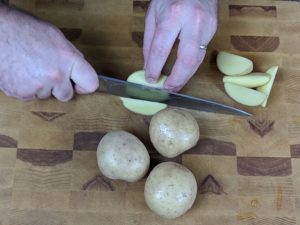
All-Purpose Potatoes
All-purpose potatoes fall in between waxy and mealy varieties. The most common potato in this category is the Yukon Gold. It will pretty much work in any application, and it has a great flavour. There are other potatoes that fall in this category but it is likely that you won’t really run into them.
I should say that even though russet potatoes are a little more on the mealy side I do tend to think of them and use them as an all-purpose. I’ve never had an issue with them.
A quick note on potato varieties
It should be known that to my knowledge there are no scientific rules for what classifies as a waxy, mealy, or all-purpose potato variety. Because of this unscientific approach to the classification, you may find that other sources have some varieties that I have listed as waxy or mealy, in the all-purpose category. The truth is, the classification is really just a rough guide to help you get the best results rather than being a hard and fast rule.
Onions

Onion is the key ingredient in most key ingredients. What does that mean? I have talked before, multiple times about how most major world cuisines have a flavour base. In French cooking, it is mirepoix which is a combination of two parts onions, one part celery, and one part carrot. Spanish, Portuguese and Italian cooking have Sofrito which is some combination of onions, tomato, and bell peppers. In Cajun and Creole cooking, there is the “holy trinity” which is onion, bell peppers, and celery. Even in Indian cooking, there are onions, ginger, garlic and chilli which is the base of a lot of dishes. The common denominator in all of these is onion and there is a good reason for that. Onions are awesome!
At this point, it should come as no surprise to you for me to say that there are a lot of varieties of onions out there in the big wide world. Just like with the potatoes, we are only going to look at onions you are likely to come into contact with on a regular basis. Let’s take a look.
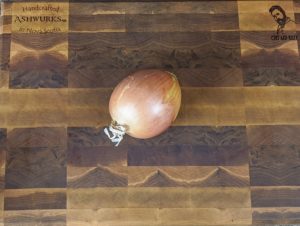
Yellow Onions
The name “yellow onions” refers to the colour of the skin not the flesh of the onion. Yellow onions are probably the most common onion and the one you are going to use most often. If a recipe says “onions” it is probably talking about yellow onions, though most onion varieties would be fine.
Yellow onions have a flavour that can range from sharp and pungent to slightly sweet. When cooked they develop a mild sweetness.
Spanish onions are a slightly larger and less strong yellow onion better suited to being eaten raw than regular yellow onions.
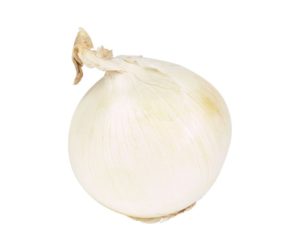
White Onions
White onions look very similar to yellow onions though their skin is lighter and more papery. Their flavour is milder and slightly sweeter than yellow onions. One issue with white onions is that they have a much shorter shelflife than yellow onions.
Vidalia onions are a larger white onion with a legal name designation. Vidalia onions must be grown in the area of Vidalia Georgia. They have a very mild and sweet flavour and a different appearance from other onions in that they are flatter at the root and stem. They are great for eating raw in salads or on hotdogs or hamburgers.
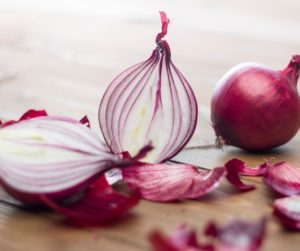
Red Onions
Red onions have a flavour that like yellow onions can vary from sweet and mild, to spicy and strong. However, they are generally sweeter than raw yellow onions. They are often used in raw in salads, roasted, grilled or used in kabobs.
Pearl Onions
Are a small white or red variety of onion more closely related to a leek than a regular onion. They are most often used for pickling and may sometimes be called button onions, baby onions, or creamers. Rather than being a true baby onion (a young onion) they are actually kept small by being planted very close together.
Pearl onions are not used that often nowadays, however, they do make a great addition to soups, stews, and braises.
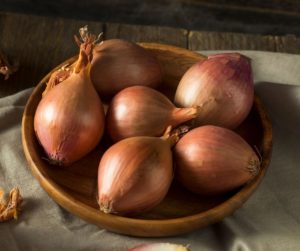
Shallots
Shallots like pearl onions are more closely related to leeks and garlic than they are to regular onions. Despite this, their flavour is not that different from regular yellow onions, except in that they are milder and slightly sweeter.
Shallots can be used in the same way regular yellow onions when a milder flavour is desired. They are terrific minced and used to flavour quick pan sauces. They are also great sliced thin and fried to garnish steaks.
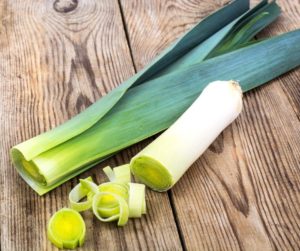
Leeks
Leeks are a large green vegetable in the onion family. They look similar to green onions but are much, much larger. Their flavour is like a very mild onion, with a slightly sweet undertone. Typically, only the white and light green parts of the leek are eaten. The dark green parts are very tough but can be used to flavour stock.
Leeks can be used in a variety of ways from being roasted whole to being sliced or diced and sautéed. They make a great addition to soups or stews. In this application, they are generally used along with other onions rather than as an alternative. They also go very well with seafood.
Scallions or Green Onions
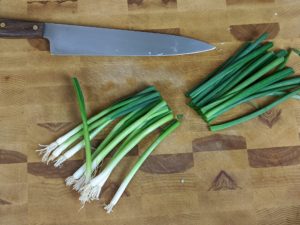
Green onions, also known as spring onions, scallions, or occasionally salad onions are a member of the onion family that has an underdeveloped bulb. They have a mild flavour and are used in a variety of cuisines in a variety of ways.
Green onions can be used either cooked or raw. They can be thinly sliced, diced, or even roasted whole. They are terrific on tacos, in curry, stir-fries, and a whole host of other dishes.
One common way that I like to use green onions is to separate the greens from the whites (dark greens, from light greens). I then dice the light green parts and add them to stir-fries along with yellow onions and garlic. Then, I thinly slice the green parts and use those to garnish the stir-fry after it has been cooked. The white bits get very sweet when cooked and add a lot to a dish.
Conclusion
We’ve all used onions, and we’ve all used potatoes, I know this. But I think that because these are such common ingredients we sometimes overlook the nuance that exists between varieties. We miss the opportunity to enhance our cooking by using a variety that may be better suited to what we are doing. Maybe we haven’t been doing our food justice by using the same potato or onion over and over. Maybe it’s time to take a second look at the potatoes and onions we pass by simply because we think they are all the same.
On Friday we will take a look at another batch of ingredients in part three of this series. If you are new to the blog you should check out the other posts in my free basic cooking course. You can start with the first one here.
Have a great Wednesday and Thursday, everyone. Thank you as always for reading and sharing and I will see you on Friday!

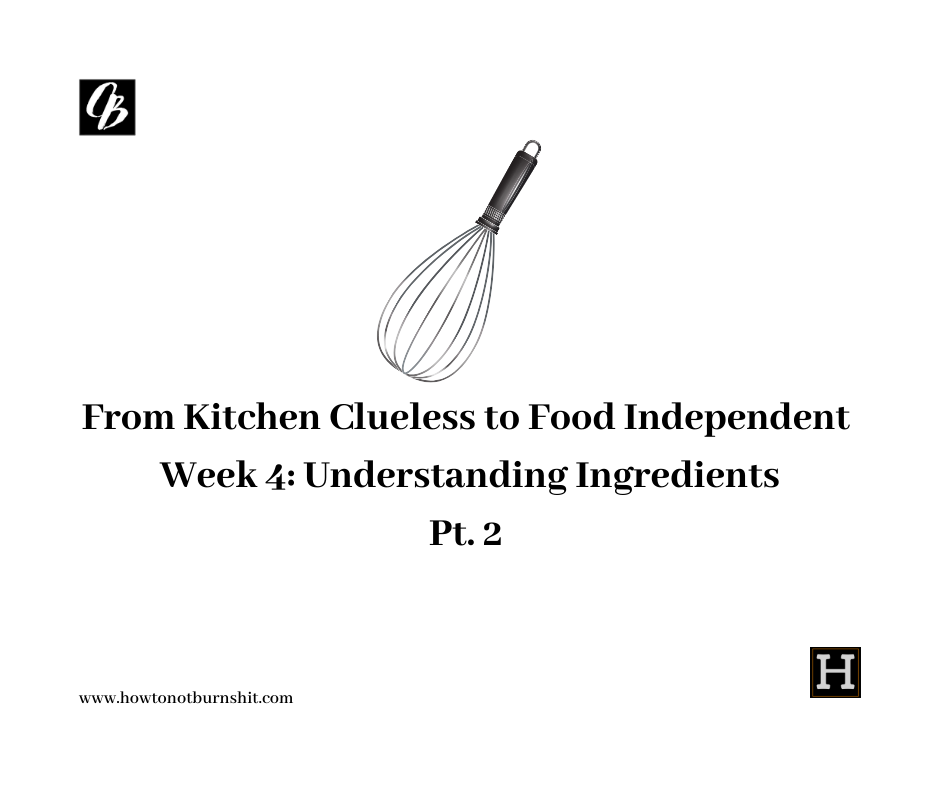
0 Comments